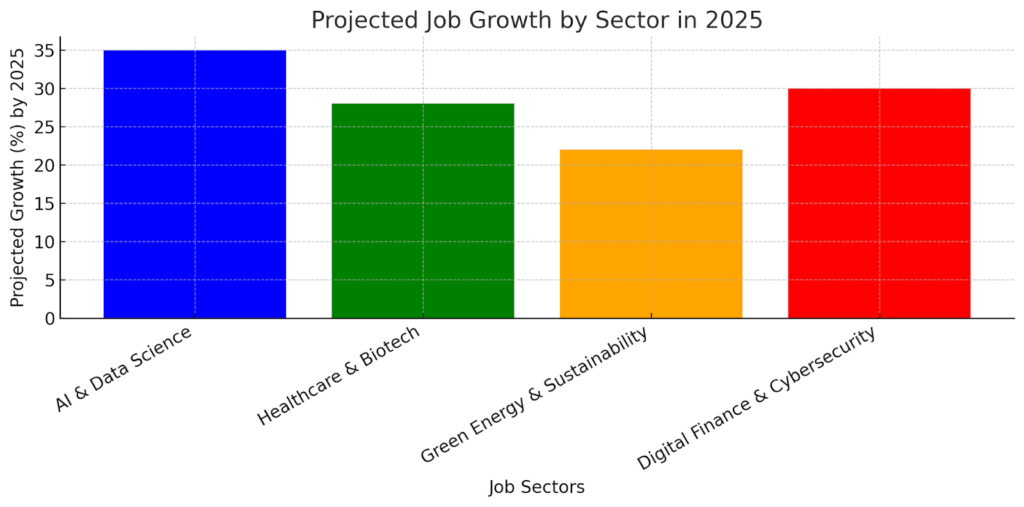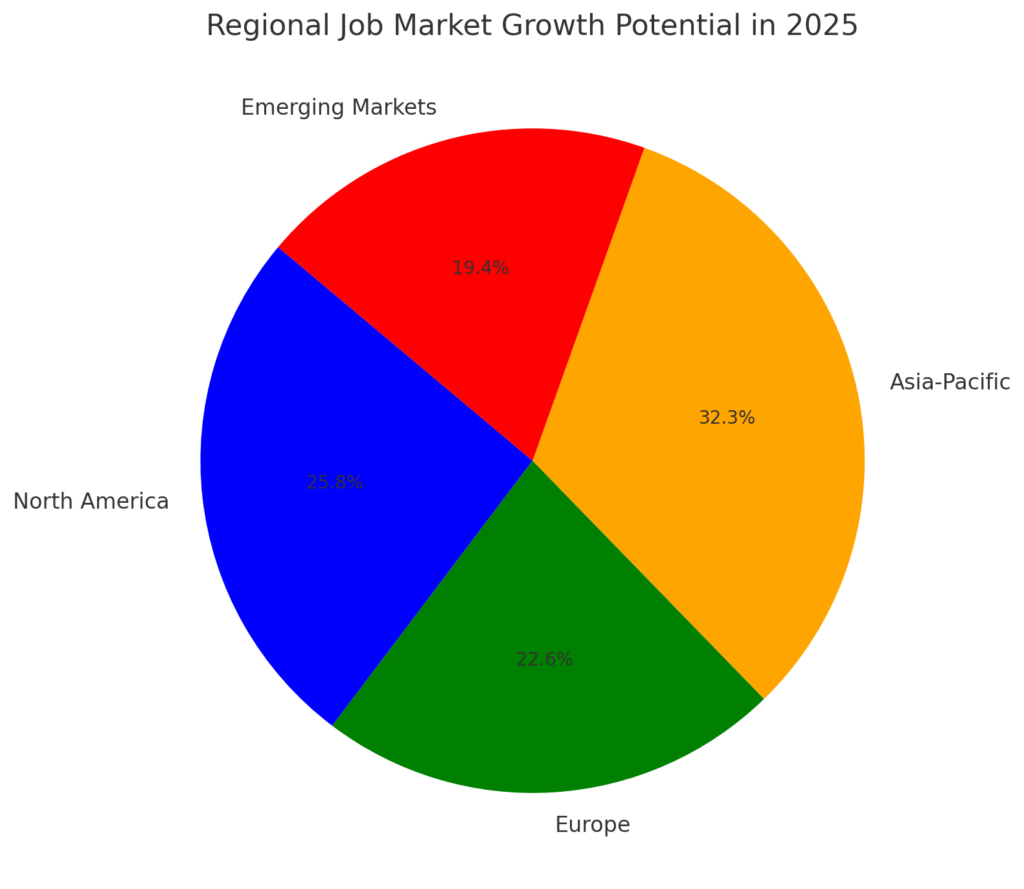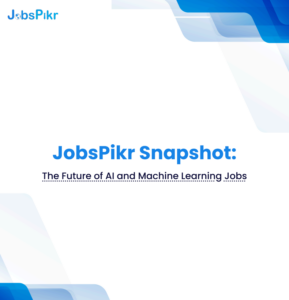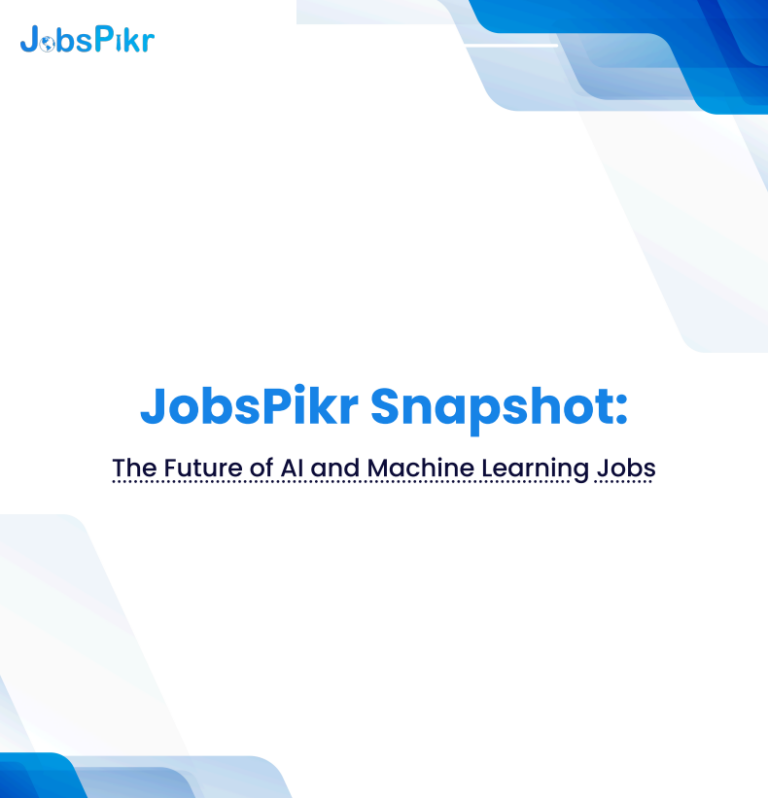As we move into 2025, the global job market is undergoing a transformative shift, driven by economic fluctuations, technological advancements, and workforce evolution. With rapid advancements in AI and automation, the demand for skilled labor is rising while traditional roles undergo significant transformation. This report delves into real-time job market trends, providing insights from labor market intelligence to help CHROs, HR leaders, recruitment agencies, business strategists, economic analysts, and policymakers make informed workforce decisions.
Key findings indicate that sectors such as AI, healthcare, green energy, and digital finance are witnessing accelerated job growth, while clerical and low-skilled roles are facing displacement due to automation. Additionally, regional disparities in job creation persist, with emerging markets seeing growth in technology outsourcing and developed economies focusing on skill-based employment models. Salary trends show increasing wage gaps, while predictive workforce analytics play an essential role in talent planning and retention strategies.

The 2024 Job Market: Key Insights and What to Expect in 2025?
The global job market in 2024 was characterized by significant workforce shifts, remote work adoption, and the increasing influence of AI and automation. As we enter 2025, businesses are leveraging labor market intelligence to predict hiring needs, understand skill shortages, and enhance workforce planning.
Economic indicators show moderate growth in employment rates across key industries, with technology and healthcare sectors leading job creation. Meanwhile, automation continues to impact job stability, requiring companies to adopt agile workforce strategies. This report explores how labor market intelligence helps businesses adapt to evolving job market trends while identifying high-value investment areas.

Regional Job Market Analysis: Where Hiring is Booming?
The job market varies significantly by region, with differences in demand for skills, employment patterns, and industry growth. Several factors, including economic stability, technological advancements, and government policies, shape workforce trends across different geographic areas. Understanding regional labor market trends helps businesses optimize their hiring strategies and plan workforce expansion efficiently.

1. North America
North America remains a global leader in technology-driven employment growth. The demand for AI, cloud computing, and cybersecurity professionals has surged, with tech-related job postings increasing by 25% year-over-year. Companies are embracing hybrid work models, which is reshaping hiring strategies and expanding opportunities for remote talent. In addition, sustainability-focused industries such as green energy and electric vehicle manufacturing are growing rapidly due to government policies promoting environmental responsibility.
The healthcare sector is also experiencing rapid expansion due to aging populations and advancements in medical technology. The U.S. Bureau of Labor Statistics reports that healthcare occupations will account for two out of every ten new jobs created by 2025. This growth is driven by an increased demand for home healthcare providers, nurses, and medical researchers.
2. Europe
Europe’s job market trends are largely shaped by its emphasis on digital transformation, regulatory compliance, and sustainability. The European Union’s Green Deal has sparked a boom in sustainability jobs, with positions in clean energy, climate policy, and carbon neutrality initiatives growing at a CAGR of 12%.
The financial sector is also expanding, particularly in fintech, blockchain, and cybersecurity. European businesses are investing heavily in AI-driven business intelligence, leading to a 17% growth in AI-related hiring. However, talent shortages in cybersecurity and software development remain a challenge, pushing companies to recruit global talent and offer competitive compensation packages.
3. Asia-Pacific
Asia-Pacific is witnessing rapid job market growth, fueled by its thriving IT services, e-commerce, and digital marketing sectors. The region has become a hub for outsourced technology services, with India, China, and Southeast Asian nations leading in software development, AI research, and cloud computing solutions.
The demand for e-commerce and supply chain management professionals has skyrocketed, with companies scaling their digital operations to meet the increasing demand for online shopping. Government-led investments in STEM education have significantly contributed to the rise of a skilled workforce in fields such as AI, robotics, and engineering. As a result, STEM-based employment in Asia-Pacific is projected to grow by 18% in the next five years.
4. Emerging Markets
Emerging markets are becoming key players in remote work, gig economy expansion, and offshore outsourcing. Countries in Latin America, Africa, and Eastern Europe are seeing an increase in demand for IT professionals, digital marketing specialists, and customer service representatives.
Government-backed vocational training programs are helping to bridge the skills gap and equip local talent with the expertise required to work in global industries. The gig economy is also expanding, with an increasing number of professionals freelancing in digital services, content creation, and software development. The flexibility of remote work has enabled businesses in developed economies to tap into global talent pools, thereby reshaping traditional employment models.
Salary & Compensation Insights: Key Benchmarks for Employers
Salaries and compensation structures are evolving in response to economic changes, industry-specific demand, and workforce expectations. Real-time labor market intelligence provides insights into salary benchmarking, pay disparities, and evolving compensation structures.

1. Insights from Salary Benchmarking Data
AI and cybersecurity roles continue to offer some of the highest salaries in the job market. On average, AI engineers earn 30% more than software developers, reflecting the demand for machine learning expertise. Similarly, cybersecurity professionals earn significantly higher wages due to the increasing need for data protection and risk management solutions.
Remote work salary structures are also evolving. Employers are moving toward geographic pay adjustments, ensuring that remote workers in lower-cost regions receive fair compensation aligned with their roles.
2. Pay Disparities and Evolving Compensation Structures
Despite wage growth, pay disparities persist. Women continue to earn 18% less than men in technology and finance roles. Employers are addressing this gap by implementing pay transparency laws, particularly in North America and Europe, where salary disclosure regulations are becoming more common.
Additionally, skills based compensation models are gaining popularity, rewarding employees based on expertise and technical proficiencies rather than tenure. Organizations that have adopted performance-based pay structures have reported a 20% increase in workforce productivity.
How Data-Driven Workforce Planning Improves HR Decisions?
Data-driven workforce planning is revolutionizing hiring and talent management strategies. Employers are leveraging predictive analytics to forecast hiring needs, analyze labor supply trends, and improve workforce diversity.
1. How Businesses Use Predictive Workforce Analytics?
Companies are increasingly using AI-powered hiring solutions to anticipate future workforce needs. Predictive analytics can assess skills gaps, identify high-demand job roles, and optimize hiring timelines. Businesses that use workforce analytics have seen a 25% reduction in hiring time and a 30% improvement in employee retention rates.
2. The Rise of Data-Driven Hiring Strategies
Real-time labor market data enables recruiters to adjust hiring strategies on demand. Companies using AI-driven job matching technologies report a 35% improvement in recruitment efficiency. Employers are also utilizing big data to enhance diversity and inclusion efforts by analyzing workforce demographics and hiring trends.
Conclusion
As global job market trends evolve, businesses must embrace data-driven workforce planning, skills development, and flexible hiring strategies to remain competitive. Organizations that leverage labor market intelligence can adapt to changes in hiring demand, optimize salary structures, and address skills shortages efficiently.
For recruiters and HR leaders, investing in workforce reskilling programs is crucial to meet the shifting demands of industries impacted by AI and automation. Businesses should actively monitor regional job market trends and adjust hiring strategies to align with labor supply fluctuations and economic conditions.
Leveraging real-time labor market intelligence, such as JobsPikr’s job market insights, will be essential for businesses looking to make informed hiring decisions. By using data-driven analytics, companies can improve recruitment efficiency, benchmark salaries, and optimize workforce planning, ensuring they stay ahead of job market transformations in 2025.Sign-up on JobsPikr today to access labor market intelligence and make smarter hiring decisions.






